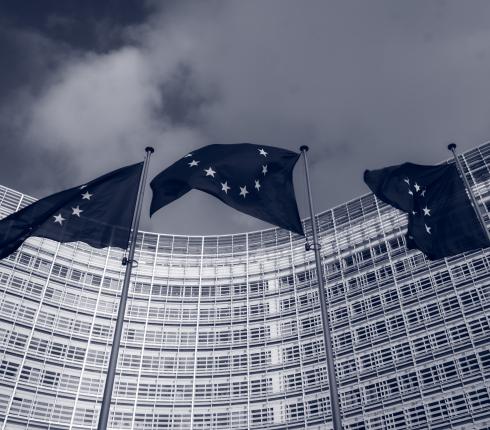Proposal for a regulation on crypto-asset markets - "Cryptocurrency"
At the end of 2020, the Commission presented its digital finance package. We will discuss the purpose of the regulation and what is important to be aware of in the regulation in this article.

The package basically consists of three elements:
1. action plan for the digitisation of financial services
2. proposal for a regulation on crypto-asset markets;
3. proposal for a pilot scheme on market infrastructures based on distributed ledger technology (DLT).
The proposal for a regulation on the regulation of crypto-assets and the proposal for a pilot scheme for DLT is the first concrete action by the EU in this area. The proposal is comprehensive and contains 126 articles.
WHAT IS DIGITAL FINANCE?
"Digital finance" is the collective term used for the influence of new technology on the financial sector, including products, business models, applications, and processes that have or could potentially change the way financial services are offered. Digital finance is seen as being able to break national boundaries and increase competition for online banking, peer-to-peer lending, and personal investment advice and services.
WHAT IS THE PURPOSE OF THE REGULATION?
Crypto-assets are one of the most important applications of blockchain technology in finance. Following a sharp increase in the market capitalisation of crypto-assets during 2017, efforts towards regulation have strengthened. When the EBA and ESMA in January 2019 stressed that most crypto-assets fall outside the scope of EU law in financial services, it emphasised a need to clarify the regulatory regime.
The proposal for a regulation has four main objectives:
1) legal certainty
2) innovation
3) consumer and investor protection as well as and market integrity
4) financial stability
The proposal underlines the need for a clear definition of the regulatory approach to crypto-assets not covered by the existing financial services legislation. Also, the proposal identifies a need to establish a secure and proportionate legal framework to promote the development of crypto-assets and the use of DLT.
WHICH ARE THE MOST IMPORTANT POINTS IN THE REGULATION?
At the time of writing, crypto-asset issuers and crypto-asset service providers cannot fully exploit the benefits of the single market due to a lack of legal certainty regarding crypto-assets. Different approaches in the Member States create unequal conditions of competition. Therefore, the proposed regulation will establish a common and uniform EU framework that can create a level playing field for all companies within the EU
TOKENS
The proposal distinguishes between three subcategories of crypto-assets, which should be subject to specific requirements. The categories are 1) "utility tokens", 2) "asset-referenced tokens", and 3) "e-money tokens".
The new regime will help provide more clarity and regulatory certainty for issuers and crypto-assets providers within the EU. Among other things, the rules allow crypto-asset service providers authorised in one Member State to offer their services in the other Member States – so-called "passporting".
A financial instrument under MiFID II
The regulation is accompanied by a proposal for an amending directive, which clarifies that the current definition of "financial instruments" also includes financial instruments based on DLT. Thus, the amending directive will lead to changes in MiFID II, where the definition of "financial instruments" in point (15) of Article 4(1) will be changed to: "those instruments specified in Section C of Annex I, including such instruments issued by means of distributed ledger technology".
Also, to ensure financial stability, several safeguards have been implemented, including requirements for the issuer's capital, specifying asset deposit requirements, obliging the issuer to provide investors with complaint handling guidance, and granting rights to investors against the issuer.
The structure of the legislative measures presented is very similar to that of established financial companies. This creates the "level playing field" for the benefit of the established entities, who have sacrificed resources to meet tough financial requirements. Moreover, the proposals seem to address the strong need to increase investor protection in the crypto field without compromising its development, as it is not the Commission's intention to regulate the underlying technology (DLT).
DO YOU WANT TO BE KEPT UP TO DATE
NJORD closely follows the developments and is happy to engage in a dialogue on the specific parts of the new legislative package. This news will be followed by more detailed articles about the contents of the digital financial package. Sign up for our newsletter if you want to stay updated.





























